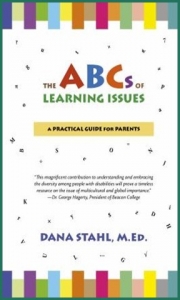
But, I thought I made Myself Clear!
Learning to speak and learning to make ourselves understood are two separate and distinct matters. Expressive language involves the use of speech, writing and non-verbal communication.
Interestingly, people who have intact receptive language capabilities (the ability to understand what is being said to them), can demonstrate difficulty with the output of language undermining an effective way to communicate their wishes, needs, and ideas.
The following learning issue, Expressive Language is reprinted from my book,

Clinical definition
Expressive language is defined as the “output” of language, or what a person puts out into the world in order to communicate their wishes and needs. The term expressive language includes verbal language, written language, and nonverbal body language.
Educators’ definition
Expressive language involves the use of speech, writing, and non-verbal communication, like facial expressions and gestures, to convey a message to others. People with expressive language difficulties struggle to respond to other people by using verbal communication, written communication and/or body language, despite having intact receptive language capabilities.
What do these definitions mean?
Expressive language issues adversely impact people’s ability to communicate their thoughts and ideas. While people with expressive language issues understand what is said to them (receptive language), they struggle with verbalizing, writing and/or physically expressing their thoughts and ideas.
Which behaviors may parents observe if their child demonstrates this learning issue?
• Your child will answer direct questions with one- or two-word answers.
• They will rarely elaborate on an idea or provide a detailed account of their experiences.
• Their choice of vocabulary is limited and unsophisticated.
• Written expression may be tedious and result in an underdeveloped written product.
• Your child’s body language might not correspond with how they feel about a certain situation.
Which professionals can treat this learning issue?
• Speech and language therapists
• Learning specialists
• Classroom teachers
• Parents
Which teaching strategies can be effective in school?
• Promote active participation in class discussions and on pen and-paper activities.
• Include the use of visual aids to increase students’ use of content-based vocabulary.
• Visual graphic organizers assist in developing expressive language production.
• Use sentence expanders and a writing program to enhance written expression.
Which strategies can help at home?
• Use who, what, when, why, where, and how questions when talking with your child. Avoid yes-and-no questions.
• Use sentence expanders to enhance written expression that include who, what, when, where, why and how responses. For example, The boy ran is a sentence, but it does not elicit a lot of information. Help your child expand the sentence by asking questions such as: How did the boy run? Where did the boy run?
• Show your child how the answers to these questions changes the sentence to The boy ran very fast in the park.
Need help understanding your child’s learning issues?
Read The ABCs of Learning Issues by Dana Stahl M.Ed.
- Understand what your child is experiencing and how it affects their learning
- Learn the meaning of terms educators and professionals use

Do you have a Question About Your Child’s Learning?
Ask Dana; Dana Stahl M.Ed answers your questions
- Post a confidential question through the EA website
- Dana will provide an answer and suggest next steps


